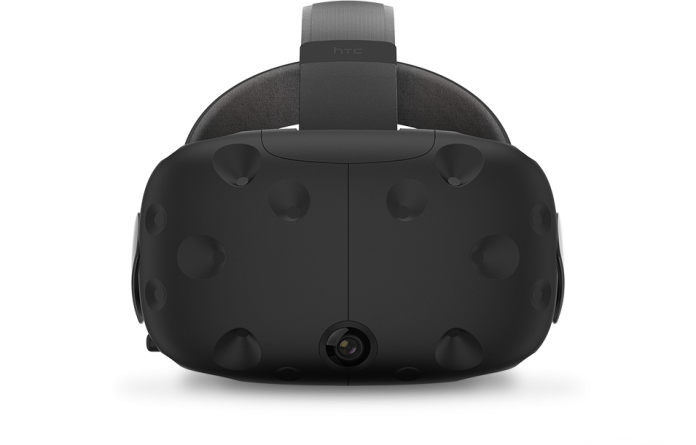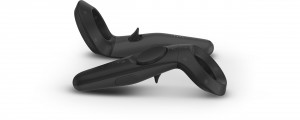Despite the unfortunate leak of the new HTC Vive development kit last month, HTC is rolling out the virtual reality (VR) device for its debut press outing at CES this week. Along with new announcements confirming additional features, VRFocus managed to get some hands-on time with the latest iteration of the head-mounted display (HMD), the HTC Vive Pre.
First is the HMD itself. Now much lighter and with a significantly reduced form factor, the Vive Pre is much more comfortable than previous iterations. However, it still remains bulky in comparison to the consumer version of the Oculus Rift and is far less comfortable than PlayStation VR. The plastic shell is much smoother than the original version and hides the on-board sensors well, while the external camera – suggested by Nvidia representatives to be used as a passthrough camera – is located on the lower quadrant on the central divide.
Another new addition is the connected cabling. No longer does the HTC Vive host a number of ports for detachable cables; these are all now mounted within the casing, and a new 3.5mm headphone jack is offered as part of the cable collection. It’s a small change, but one which is most certainly for the better, as is the case with near-every aspect of the new controller design.
Receiving a far greater overhaul than that of the HMD itself, the controllers are now far closer to being ‘consumer ready’ than any previous iteration. Still opting for a solid disc input opposed to the rubberised panel (akin to the Steam Controller) seen on the very first demonstration units, the pad is now nestled into a raised curve opposed to forming the majority of the user-facing top end. The completely redesigned location detection area is now much more attractive visually, but does make the controllers feel somewhat top-heavy. The controllers are certainly more weighty than the previous iterations VRFocus has been hands-on with, though far less fragile because of it.
A new synchronisation button has been added lower down the hand grip on the controllers, and a Micro USB port for recharging of the internal battery has been added at its base. Yes, one of the biggest complaints from developers – the poor battery life of the controllers – has been addressed, however this does bring another caveat with it: the controllers are solid units. You cannot remove the rechargeable battery, which could potentially cause trouble due to battery degradation down the line. Whether or not this will become a factor will only be discovered once the device is in consumers’ hands, however.
Despite the obvious flaws with this new design there’s no denying it’s a significant improvement over its predecessor. While it doesn’t feel as close to a consumer product as the Oculus Rift or PlayStation VR (or even the debut hardware for the PlayStation 4’s VR offering, dubbed ‘Project Morpheus’) it’s certainly a step in the right direction. It’s currently unclear just what further changes the HMD and controllers will go through prior to launching this April, but as it stands the Vive Pre still provides the most ‘complete’ VR experience with the least compelling hardware design.
-END-
The post Hands on with the HTC Vive Pre – A Look at the New Design appeared first on VRFocus.
















